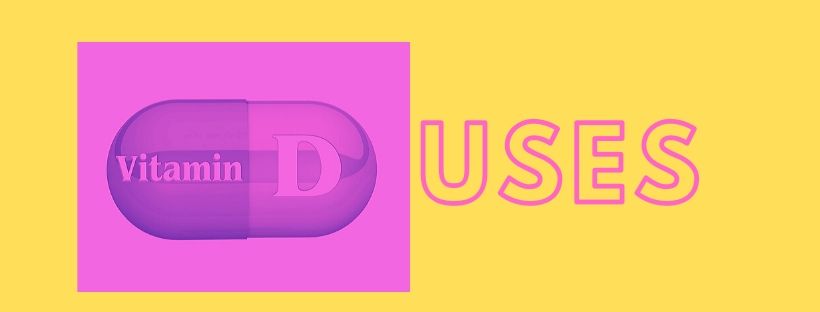Know Facts About-Vitamin D Vegetables Foods: Importance, Uses & Vitamin D Deficiency.
Share

Vitamin D Vegetables Foods are essential nowadays.
It’s not at all times simple to tell if you’re receiving adequate vitamin D.
The early symptoms of a vitamin D deficiency?
Fatigue, hypertension, and depression ? can all be explained as the outcome of stress or other factors.
Vitamin D is a vitamin that our body systems can build naturally, Know here- Vitamin D Vegetables & Fruits: Vitamin D Importance, Vitamin D Uses &Vitamin D Deficiency-
—————————————
Contents
1. Vitamin D Vegetables & Fruits-

Vitamin d sources
It’s accumulated in the liver, but because vitamin D is fat-soluble.
It can also be absorbed by fatty tissues, which protect against it from being put to effective use somewhere else in the body.
To be overweight can make it much harder for your body to disperse the vitamin D it requirements.
1.1. Mushrooms:
Mushrooms are one of the most potent sources of vitamin D.
They are yet another rich vitamin D food items.
Mushroom is exposed to the sun’s ultraviolet radiation rays while flourishing, which improves its vitamin D valuation.
The quantity of vitamin D differs according to its category and varieties.
White mushrooms, much better known as button mushrooms are a great resource of vitamin D.
4 shiitake mushrooms offer a modest 3% of the everyday value of vitamin D and 140 calories.
A cup of chopped mushroom produces a hearty 64% of the daily value of vitamin D, whilst being exceptionally low in calories.
Mushrooms also offer several other health advantages.
1.2. Eggs-

The wide range of nutritional elements found in the eggs can help enhance healthy hair, nails, and body.
Overall, a large egg can offer you 7% of the daily suggested value of vitamin D.
The yolk of the egg can assist you to get 6% of the daily value of vitamin D.
Egg yolk also offers nutrients like Vitamin A, E, K, D, iron, and zinc.
Apart from, eggs also consist of protein, sulfur, essential amino acids, and choline.
1.3. Whole milk:
The majority of the packed milk is fortified with vitamin D these days.
You need to consume high amounts of strengthened whole milk to stay healthier and fit.
A cup of strengthened milk will offer 21% of the daily vitamin D value.
1.4. Oats:
Just like most of the whole grain products, oatmeal is always fortified with vitamin D.
Together with vitamin D, oats also offer healthier vitamins and minerals.
One packet of fortified oatmeal offers 154 IU of vitamin D, amounting to 26% of the everyday value.
Make sure you confirm the dietary label before choosing the packed oatmeal.
1.5. Cod liver oil:
Cod liver oil is one of the simplest ways to get your day-to-day dosage of vitamin D.
It is a lot more of a health supplement than food. Cod liver oil is acquired from the liver of the codfish.
It is normally available in the form of capsules.
1 teaspoon of cod liver oil will offer you with 450 IU of vitamin D and 41 calories.
This golden oil is furthermore rich in omega 3 fatty acids that can help improve bone well being and fight osteoporosis in older adults.
1.6. Cheese:
Swizz, goat and ricotta cheese are worthwhile sources of both vitamin C and D.
Vitamin C and D are necessary to make you feel healthier and look more youthful.
1 slice of Swizz cheese can give you 6 IU of vitamin D.
A ½ cup offering of ricotta cheese providing can contribute 12 IU of vitamin D.
1 ounce of goat cheese, on the other hand, offers 6 IU of vitamin D.
Include a slice of cheese to your sandwich or burger or sprinkling a handful of chopped cheese over your pasta or pizza.
Whilst cooking, replace white pasta for wheat and add more fresh vegetables and herbs to boost the nutritional levels.
1.7. Soy milk:
Soymilk is an exceptional source of both calcium and vitamin D.
One cup offers around 102 IU of vitamin D, equaling to 12/5 of the regular value. It also offers 6% of the daily value of calcium.
1.8. Orange juice-

Vitamin D sources
A glass of orange juice is a healthier strategy to get started the day.
You can fulfill your demanded levels of vitamin D by consuming fortified orange juice.
One offering of orange juice can provide 100 IU of vitamin D.
1.9. Oats:
Like most of the whole grain products, oatmeal is also strengthened with vitamin D.
Along with vitamin D, oats also offer healthier vitamins and minerals.
One packet of strengthened oatmeal offers 154 IU of vitamin D, totaling to 26% of the daily value.
Make pretty sure you confirm the nutritional label before acquiring the packaged oatmeal.
1.10. Yogurt:
Milk products like cottage cheese, cheese and yogurt are often strengthened with vitamin D to enhance the calcium absorption.
Yogurt is one of the ideal foods to keep young and healthier.
A cup of fortified yogurt can assist you to meet 20% of the daily value of vitamin D.
1.11. Cereals:
In extension to milk, cereals are also strengthened with required nutrients including vitamin D.
The brands and types of cereal very broadly, so check the label for proper important information.
One cup of prepared cereals can offer you up to 30% of the daily advisable value of vitamin D.
1.12. Shrimps:
Shrimps are getting great popularity as a lot more of its health benefits are coming to the surface.
The higher levels of omega 3 fatty acids provide to bones while lowering swelling and lowering cholesterol.
3 ounces of shrimp offer 2 IU of vitamin D.
It is also a very good source of protein, vitamin B12, and vitamin E.
1.13. Butter:

Vitamin D sources
Butter consists of a small, yet considerable amount of vitamin D.
One stick offers 9 IU of vitamin D and 102 calories.
Butter does have a bad track record for being high in concentrated fats.
But keeps in mind saturated fats are necessary to help the body assimilate anti-oxidants and vitamin D.
Ingest butter in moderation for a healthier and balanced diet.
1.14. Sour cream:
Basically like butter, sour cream also has a band perform.
It is mainly corresponding to unhealthy snacks and meals.
Nevertheless, not many know that sour cream is one of the vitamin D rich foods as well.
1 tablespoon of sour cream offers 2 IU of vitamin D.
It offers protein, potassium, vitamin, and calcium as well.
1.15. Salami:
Salami and sausages are reasonable sources of vitamin D.
A 100 grams offering of Salami offers 62 IU of vitamin D, while sausages offer 55 IU.
Take salami and sausages in being moderate as they consist of high levels of sodium that can raise cholesterol levels.
It increasing the risk of stroke, heart attack, and hypertension.
2. How to Increase Vitamin D Levels Quickly-
Keeping healthy levels of vitamin D is required for many of your body’s performs.
But many of us won’t be getting nearly sufficient of it.
If you’re experiencing a vitamin D deficiency.
It’s in your best attention to get yourself back up to suggested amounts quickly.
- Restoring your amount to where they should be can help protect against health problems.
- And leave you feeling and functioning better in your daily life.
- Happily, there are many simple, healthy, and effective ways to enhance vitamin d.
- As soon as the vitamin passes into our bloodstream and goes through our liver and kidneys.
- It goes through the enzymatic conversion process, converting it into metabolites that function as hormones.
These metabolites are what vitamin D tests calculate to determine whether or not you have an insufficiency.
After they’ve been activated, the vitamin D metabolites then go to work helping our bodies absorb required minerals.
They also help to manage mood and blood pressure, manage our immune system.
And bone structure, and carry out many other vital functionalities.
3. Vitamin D Importance-

Some of the advantages associated with keeping up your vitamin D levels include:
• Controlling healthy bones and teeth
• boosting the immune system
• lowering feelings of depression and anxiety
• controlling certain types of cancer
• lowering the risk of developing Type 2 Diabetes
• Enhancing muscle strength and function
Strengthening our bones is one of the primary and most important functions of vitamin D.
It makes it smoother for us to absorb calcium and phosphorus through our intestinal tracts.
This advantage is especially significant for older people.
It increases bone and muscle power can help prevent falls, which are a major cause of serious injury for the elderly.
4. The Vitamin D Deficiency-

On the other side of the coin, having low amounts of vitamin D can result in an increased risk of harmful situations, such as:
• Osteoporosis
• Osteomalacia
• Fatigue
• A diminished immune system
• Dementia and Alzheimer’s disease
• High blood pressure
• Insomnia
• Rickets
Indeed there are a number of other diseases and conditions that are corresponding with a lack of vitamin D.
Such as hair loss, muscle pain, inflammation-related bowel disease, and fibromyalgia.
5. Vitamin D uses-

Vitamin D Uses
Effective for a rare, hereditary bone disorder
Taking vitamin D in forms of calcitriol and dihydrotachysterol by mouth along with phosphate supplements.
It is reliable for treating bone disorders in people with low levels of phosphate in the blood.
Softening of the bones (osteomalacia).
Taking vitamin D3 is reliable for treating the softening of the bones.
Also, having vitamin D in a form known as calcifediol is effective for treating softening of the bones due to liver disease.
In addition, taking vitamin D2 is successful in treating the softening of the bones caused by medications or poor absorption syndromes.
A.Rickets.
Vitamin D is effective in preventing and treating rickets. A specified form of vitamin D, calcitriol, should be used in people with kidney failure.
B.Hypoparathyroidism
Low levels of parathyroid hormone can cause low calcium levels.
Taking vitamin D in forms of dihydrotachysterol, calcitriol, and or ergocalciferol by mouth is effective for increasing calcium blood levels.
C.Psoriasis.
Implementing vitamin D in the form of calcitriol, calcipotriene, paricalcitol, or paricalcitol can help treat plaque-type psoriasis.
Applying vitamin D along with corticosteroids seems to work better than implementing vitamin D or corticosteroids alone.
But taking vitamin D by mouth does not seem to enhance psoriasis.
Possibly Effective for
D.Cavities.
Research of clinical research suggests that taking vitamin D2 or vitamin D3 reduces the risk of cavities by 36% to 49% in infants, children, and adolescents.
E.Heart failure.
Some early researching suggests that people with low vitamin D levels have an enhanced risk of developing heart failure compared to those with higher vitamin D levels.
Some research shows that receiving vitamin D supplements can help reduce the risk of developing heart failure in some women.
Also, most research recommends that taking vitamin D supplements may decrease the risk of death in people with heart failure.
F.Infection of the airways.
Most researching shows that taking vitamin D helps prevent respiratory infections in children and adults.
A respiratory infection can be the flu, a cold, or an asthma attack generated by a cold or other infection.
Some research shows that taking vitamin D during pregnancy reduces the risk of these infections in the child after birth.
But inconsistent results exist.
G.Protecting against tooth loss.
Taking calcium and vitamin D3 by mouth appears to protect against tooth loss in elderly people.
6. Vitamin D Benefits-
Some of the benefits associated with keeping up your vitamin D levels include:
• Controlling healthy bones and teeth
• boosting the immune system
• lowering feelings of depression and anxiety
• controlling certain types of cancer
• Enhancing muscle strength and function
Enhancing our bones is one of the primary and most important functions of vitamin D.
It makes it easier for us to absorb calcium and phosphorus through our intestines.
This advantage is particularly important for older people, as the enhanced bone and muscle strength.
It can help prevent falls, which are a major cause of serious injury for the elderly.
7. conclusion-
It’s usually not difficult to naturally increase vitamin D levels, primarily through exposure to sunlight.
And by eating foods rich in vitamin D.
Sun rays are actually the most efficient way to get your daily recommended dose of vitamin D.
Your skin is quite effective at producing it the natural way when exposed to ultraviolet light from the sun.
For most adults, ten to twenty minutes in direct sunlight is enough to absorb sufficient vitamin D for the day.
Lighter-skinned people take vitamin D more quickly than people with darker skin.
So, if you fall into the latter category, you may need to consume more time?
up to forty minutes?
to get the amount of vitamin D you require.
While it’s always a good idea to guard yourself against the possibility of developing skin cancer.
It is true that sunscreen prevents vitamin D ingestion.
8. FAQ
1.Q: What does vitamin D do?
A: Vitamin D has many significant functions in the body and is important in keeping overall health.
It also assists brain function, contributes to strong bones, and aids in fighting infection.
The body uses vitamin D to control the amount of calcium in the bloodstream.
2.Q: What is rickets?
A: Rickets is an illness of children and adolescents that affects growing bone.
It leads to soft, weak bones that can cause malformation and short stature.
Rickets results from the failure of growing bone and to calcify properly.
Some serious cases have been connected with respiratory failure.
3. How is the body able to store vitamin D?
Vitamin D is mainly accumulated in the fat and muscle tissue of the human body with lesser quantities in the liver.
On the whole, the storage capacity is comparatively large and contributes to vitamin D supply in winter.
You can read here also- https://en.wikipedia.org/wiki/Vitamin_D
I think you have enjoyed a lot.
Please share it with your family, friends, colleagues & neighbor.
Make valuable comments. If you are getting benefitted by following it please comments-Yes.
If Yes, then tell me how much time you spend on direct Sunlight?








Thank you for your site post. Your thoughts really
clarified all our problems. In fact, above what
we had acknowledged previous to the time we ran into your fantastic blog.
We no longer have doubts plus a troubled mind because you have totally attended to
the needs in this article. Thanks